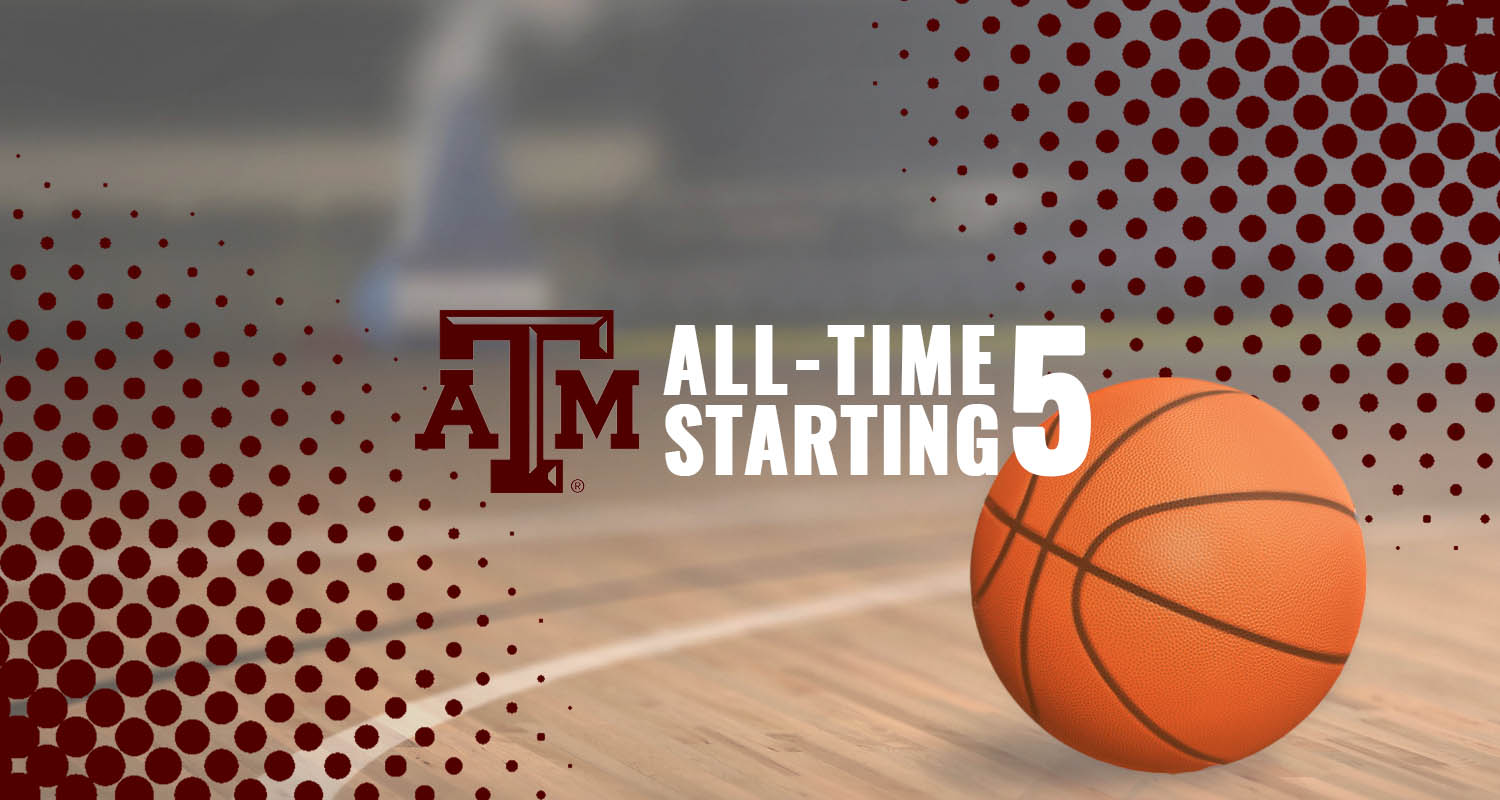
Scoring prowess and excellent rebounding highlight Texas A&M’s all-time starting 5
By Adam Spencer
Published:
Editor’s note: SDS is selecting an all-time starting 5 for every SEC program, all part of our expanded coverage of March Madness.
The Texas A&M Aggies don’t have the best history when it comes to men’s basketball, having only made it to 14 NCAA Tournaments, including this year.
However, that doesn’t mean the Aggies haven’t had some talented players, as their all-time starting five has plenty of firepower, especially when it comes to scoring.
A&M is preparing for a Sweet 16 game Thursday night, when current stars like Robert Williams, Tyler Davis and TJ Starks will try to push the program to the Elite Eight for the first time. Some of the players listed below helped the Aggies reach the Sweet 16, too, while others toiled in relative obscurity during some of the program’s darker years.
With that said, here’s a look at how the Aggies’ all-time starting 5 should look:
G: Bernard King (2000-2003)
With 1,990 career points, King is by far the Aggies’ leading scorer. He averaged an impressive 17.3 points per game during his time in College Station, but he was far from a one-trick pony.
He’s also first in free throws, second in threes and third in assists. Sadly, King put up all these spectacular numbers during a down time at Texas A&M, as the Aggies finished below .500 for King’s first three seasons and only 14-14 during his senior campaign.
Still, based on his versatility and scoring ability, he deserves a spot on this list and would probably benefit from playing with teammates like the ones below.
G: Acie Law IV (2004-2007)
Fortunately for Law, his A&M squads fared a little better than King’s, making it to the NCAA Tournament his junior and senior seasons and advancing to the Sweet 16 during his last year in College Station.
However, perhaps his biggest moment came during his junior year, when he hit a three at the buzzer to take down No. 7 Texas in College Station, as you can see below:
Law averaged 18.1 points, 5.0 assists and 3.3 rebounds per game as a senior and finished fourth on A&M’s all-time points list, fourth in assists, seventh in steals and ninth in 3-pointers.
F: Josh Carter (2006-2009)
Carter was a lights-out 3-point shooter, finishing first on the Aggies’ all-time 3-point list with 299 and first in percentage (41.8).
He wasn’t a scoring machine like the other players on this list, finishing only seventh in points with 1,566, but he was prolific from beyond the arc. He also went to the NCAA Tournament all four years — something only a small handful of Aggies can say.
He was a bit ahead of his time in terms of launching 3s as often as he did, but he’d be a star in today’s game if he had any eligibility remaining.
F: Vernon Smith (1978-1981)
Smith was remarkably consistent throughout his A&M career, but his best year came as a sophomore in 1978-79, when he averaged 16 points, 8.2 rebounds, 2.3 assists and 1.2 steals per game. That year, the Aggies reached No. 10 in the AP Poll before finishing the year 24-9.
Smith averaged 14.9 points and 8.2 boards for his Aggie career, finishing second on the school’s all-time scoring list with 1,778 points (behind King). He’s also the school leader in rebounds with 978.
The fact that his name has stayed at No. 2 in points and No. 1 in rebounds for nearly 40 years now is a testament to the impact he had on the program.
C: John Beasley (1964-1966)
When scanning the Aggies’ record book, you won’t find Beasley’s name atop many of the lists. In fact, he only ranks fifth in points (1,594) and ninth in rebounds (764).
However, Beasley played at a time when freshmen weren’t eligible and the seasons were shorter. Therefore, to understand his true impact, you have to look at his averages. By scoring 21.8 points and grabbing 10.8 boards per contest, Beasley leads the Aggies in both stats.
Beasley was the Southwest Conference’s Player of the Year his final two seasons and led the Aggies to the 1964 SWC title. A&M has had some talented big men in the years since, including this year’s combo of Tyler Davis and Robert Williams, but none has had the impact on the program that Beasley had back in the 1960s.
Adam is a daily fantasy sports (DFS) and sports betting expert. A 2012 graduate of the University of Missouri, Adam now covers all 16 SEC football teams. He is the director of DFS, evergreen and newsletter content across all Saturday Football brands.







